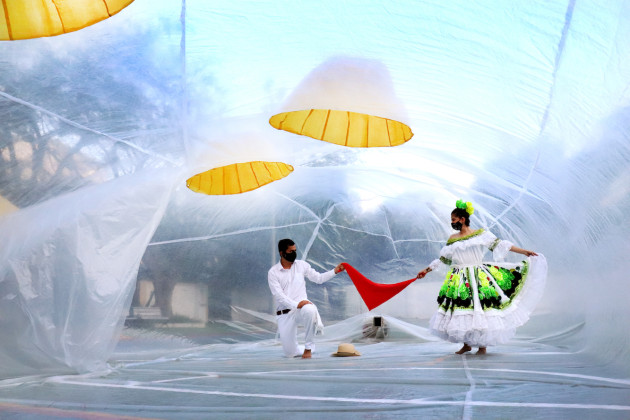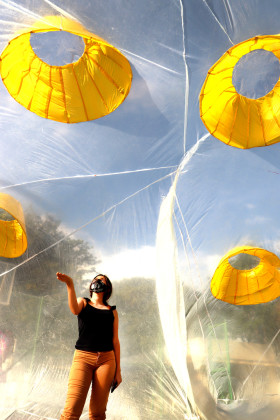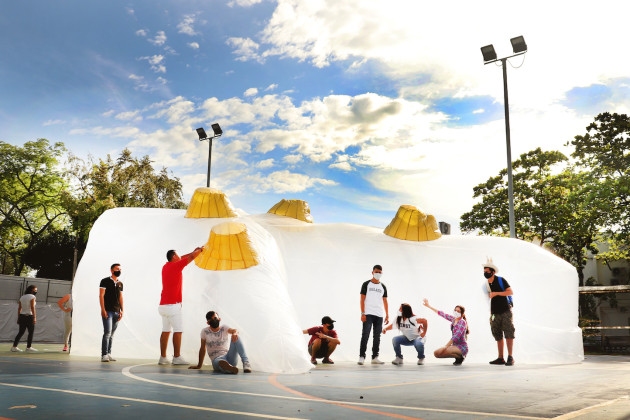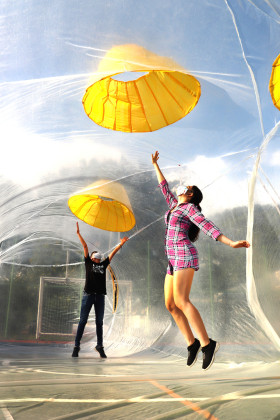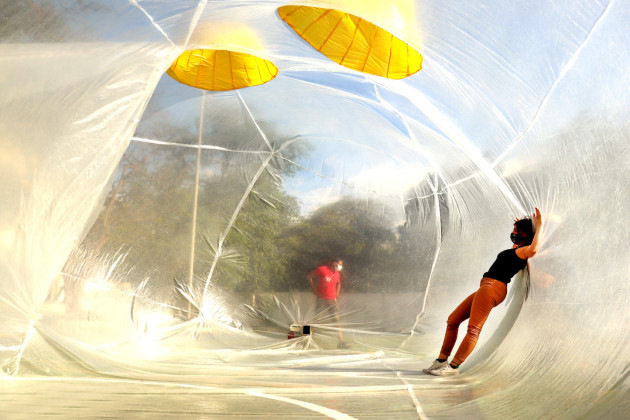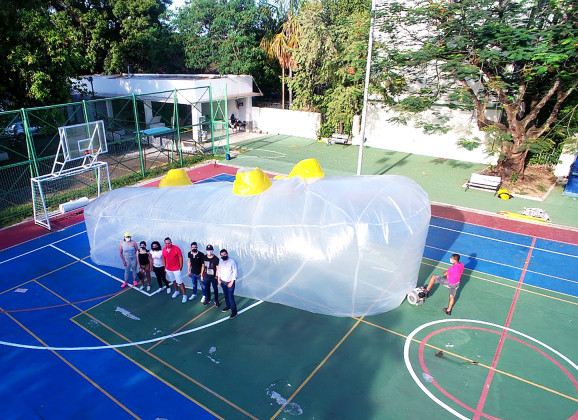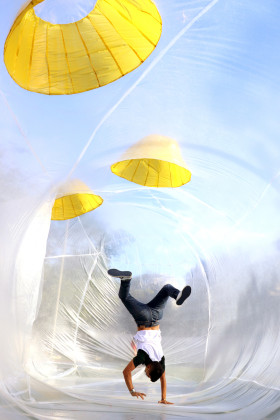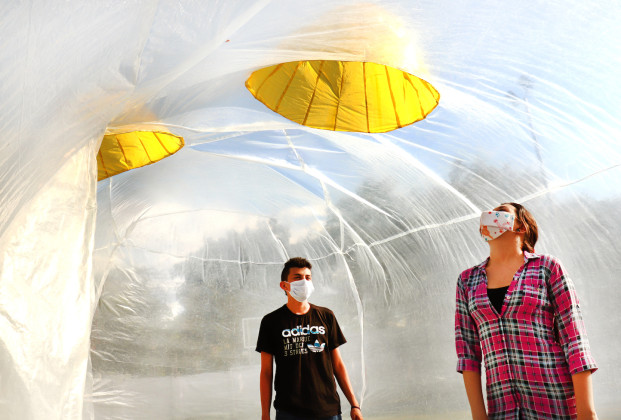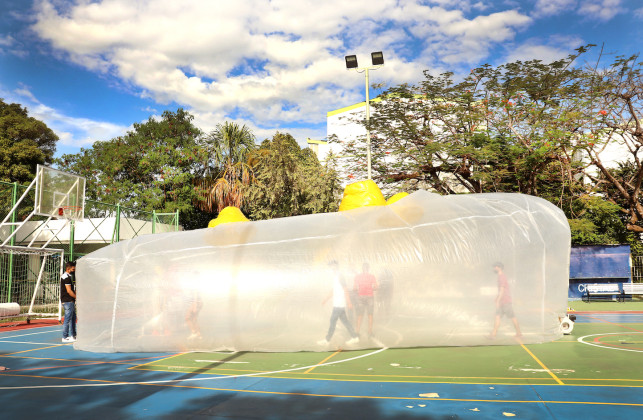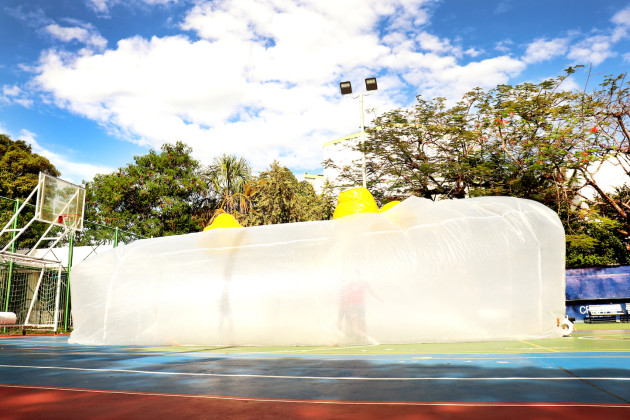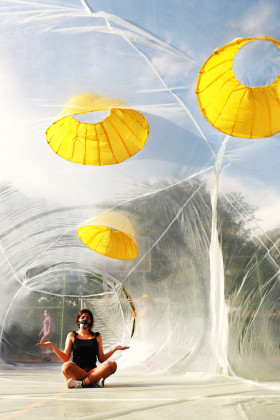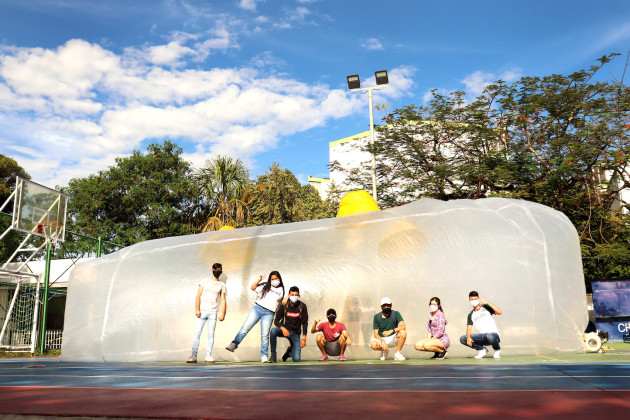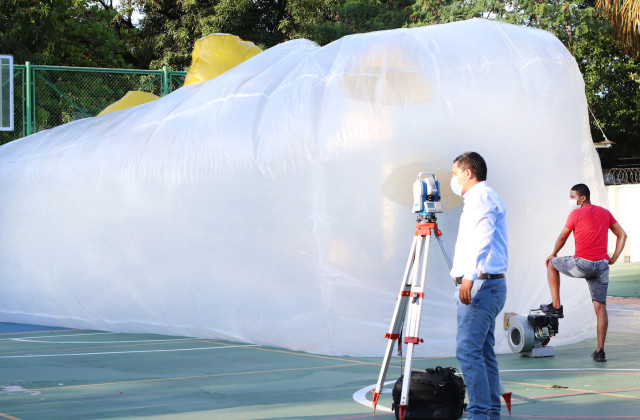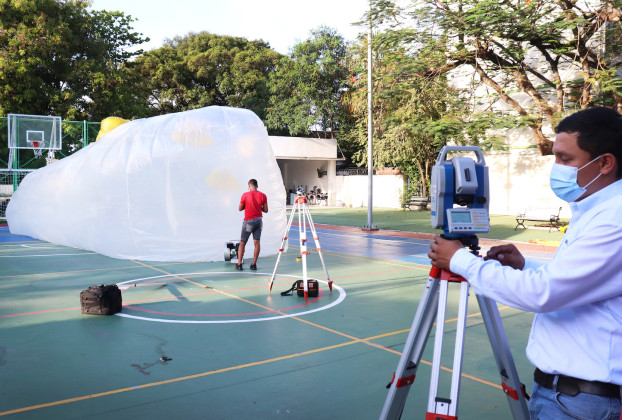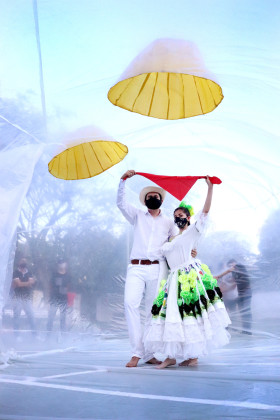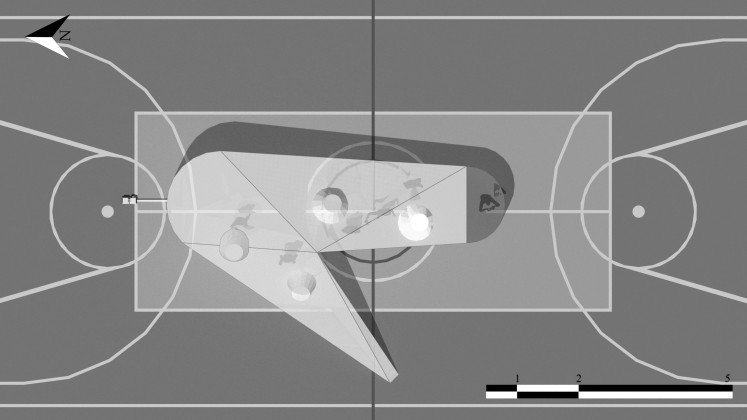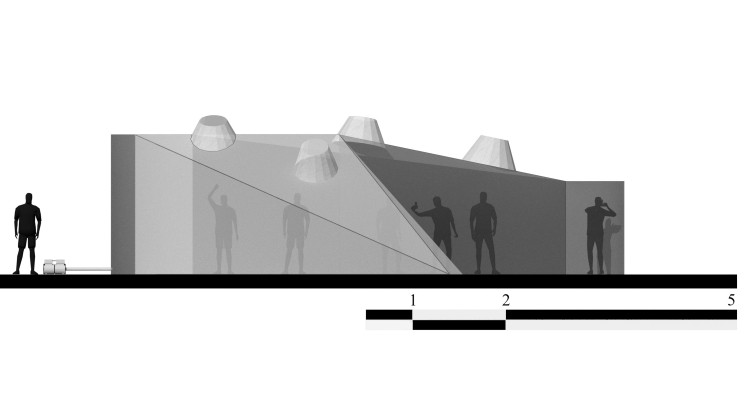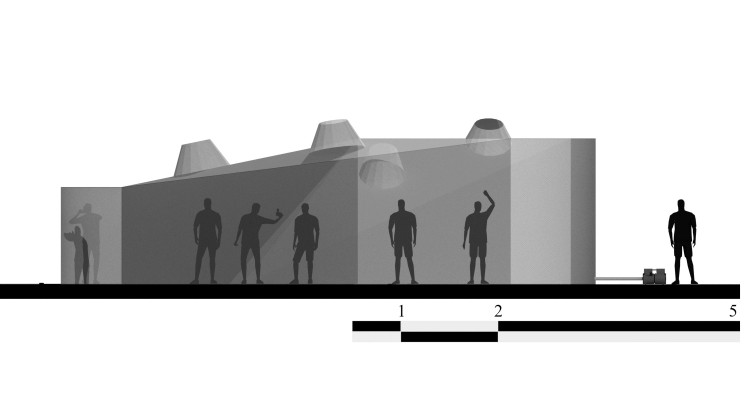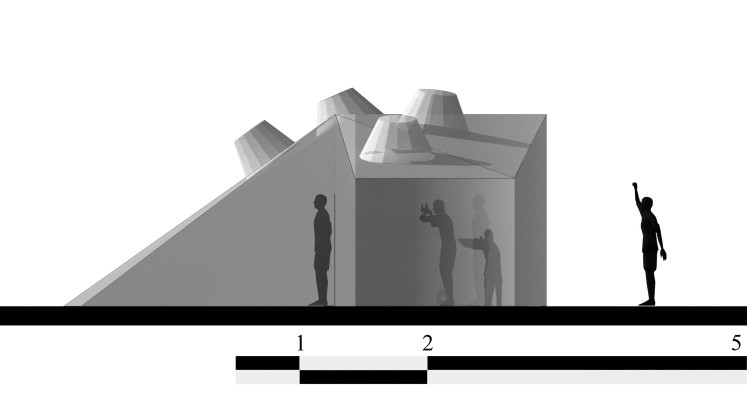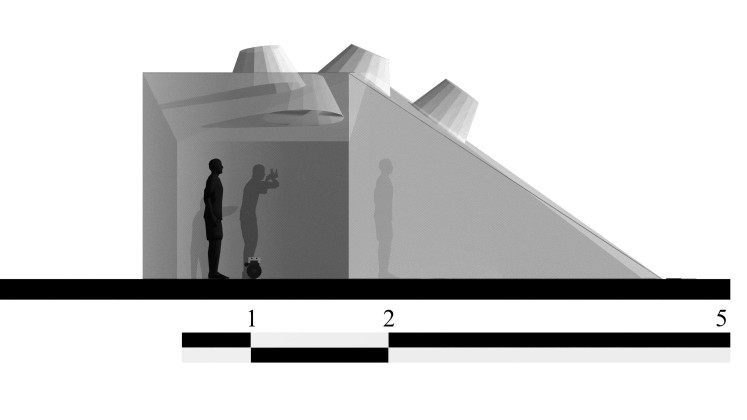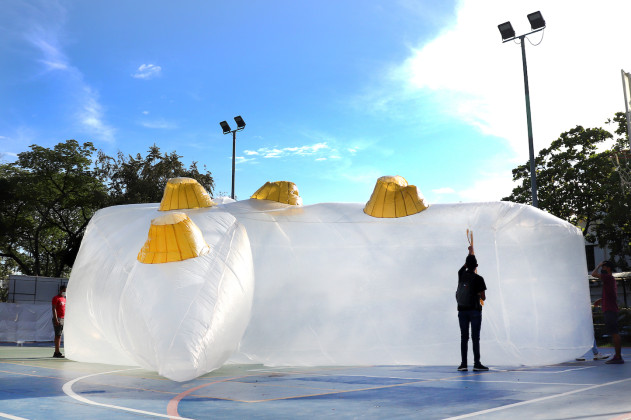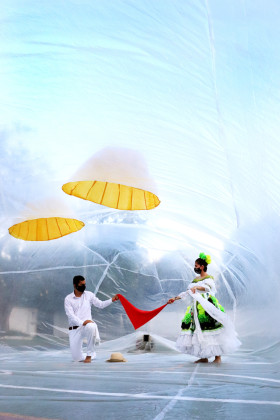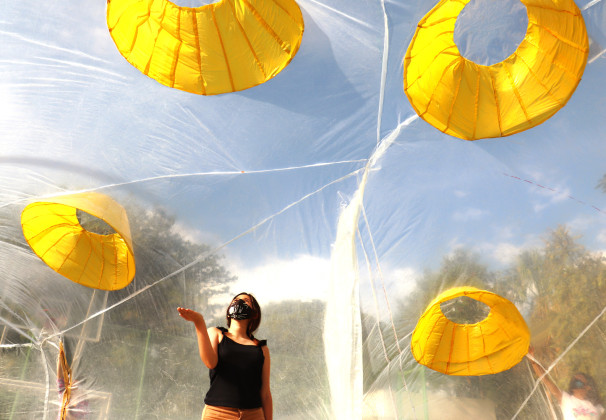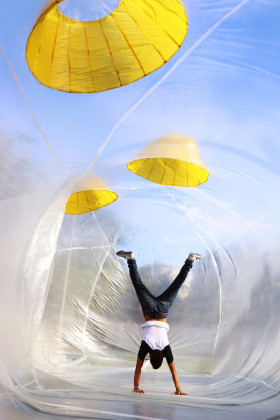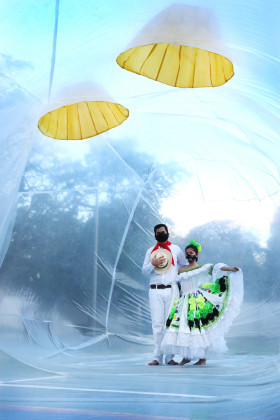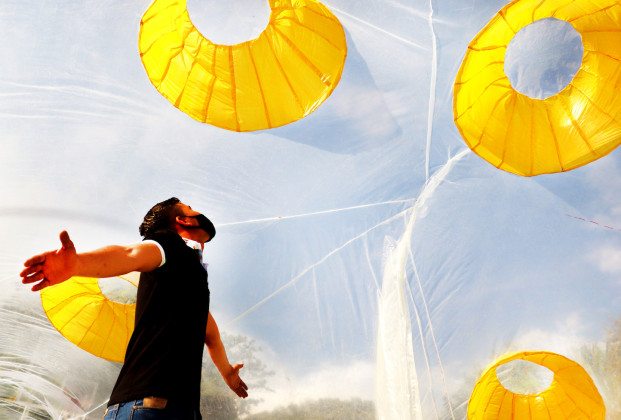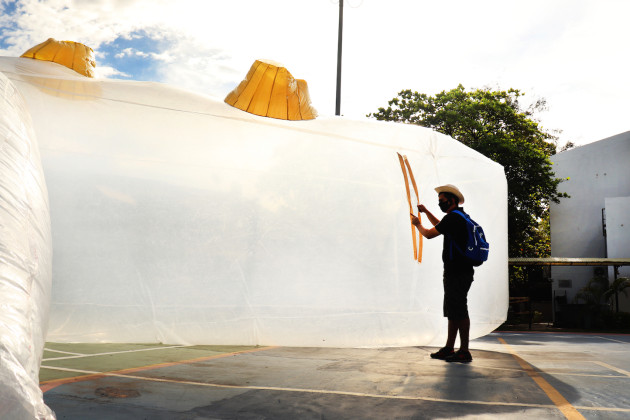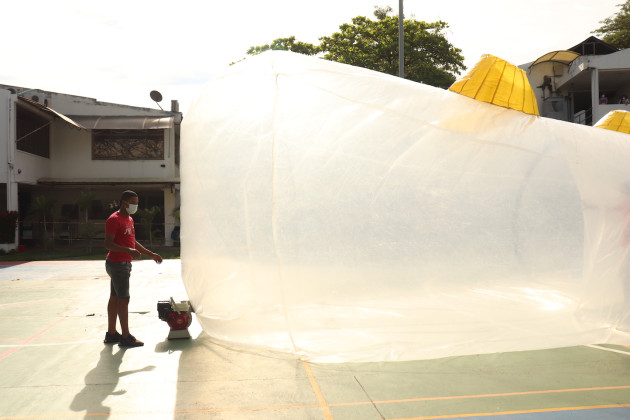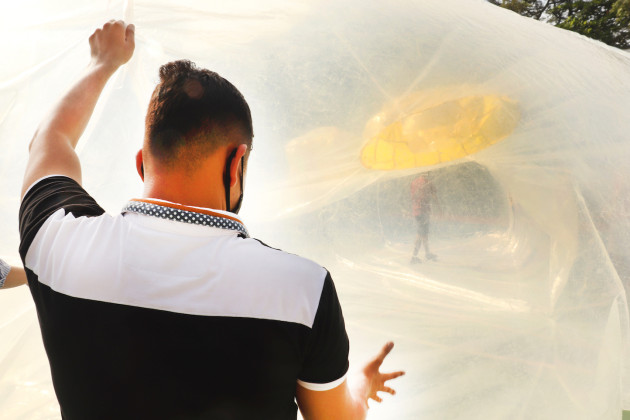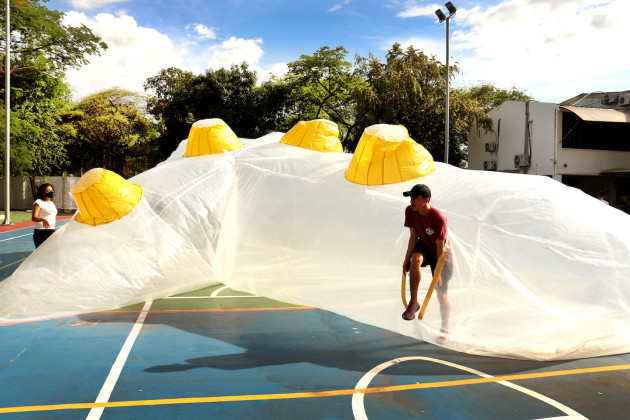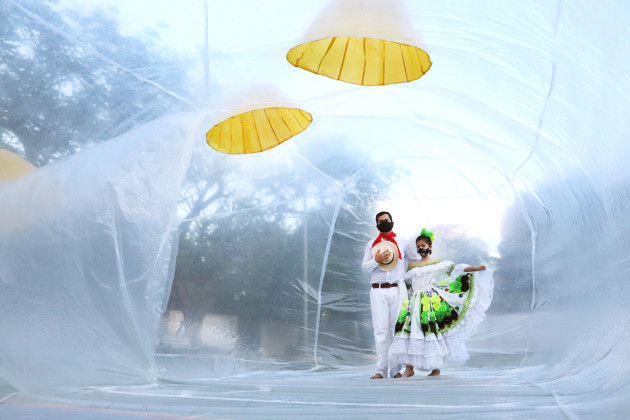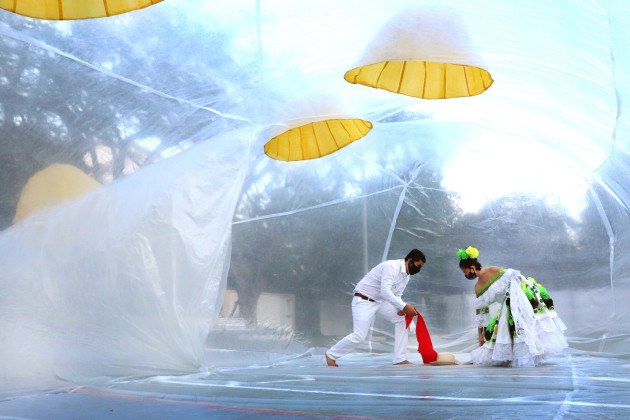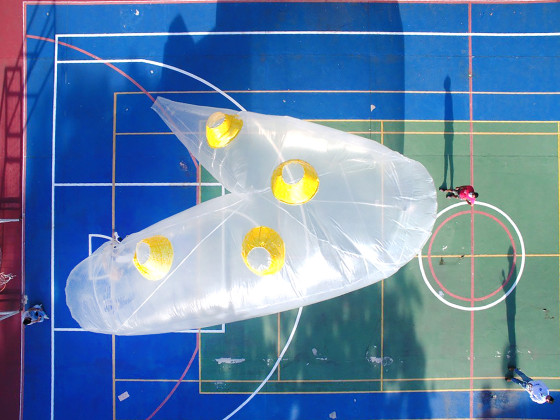Between the Real and Unreal
The Artificial Topographies in Corhuila University in Colombia replaces the existing topography lab as a temporary installation and provides both a measuring shell for students and sensual interiors.
The global crisis that Covid-19 has unleashed, forced us as a society to reinvent ourselves and to be resilient to continue in all aspects of our lives. The academy, departments of architecture and engineering, should in no way be alien to this call. On the contrary, it must catalyze the different actions of change and transformation that a new society is beginning to undertake today.
The temporary installation of Artificial Topographies was initiated when a group of students from the Corhuila University in Colombia to seek an alternative to experience the laboratories of the Topography class. For biosafety reasons, the laboratories are only allowed inside the university cloister facilities and in this case in the area framed by a flat concrete slab of the sports center.
The installation is designed and modeled in 3D by the students of the Engineering Drawing and built by the Topography students. It synthesizes and embodies the idea of building an artificial and ephemeral terrain that is born from a concrete plate and emerges so that the students develop more complex topographic surveys and thus develop the topics explored throughout the semester.
The Artificial Topographies is built in recycled plastic, its design and construction was carried out from an interactive process between the exploration of the material at a 1:1 scale with different digital tools for 3D modeling.
Its manufacture with a low energy cost was carried out manually from the spreading, marking and cutting of each of the plastic pieces fixed between them with adhesive for PVC and heat applied to each seam that resulted in the design and definition of a pattern. The form is based on triangles and semicircles intercepted by four yellow zenith ducts that represent four suns strategically located at each cardinal point of the Cartesian plane. These conceptually support the plastic membrane of the artificial topographic structure thanks to a wind turbine, which keeps it rigid and stable .
The structure, in addition to allowing it to be lived, explored and studied externally, also functions as a support to host collective interventions in its interior for small cultural actions or simply as a space for a moment of relaxation and exploration.
In this way, the inflatable structure behaves like a living organism capable of awakening the restlessness, creativity and curiosity of students and passers-by.
The installation generates both in its exterior and in its interior a strange and disruptive atmosphere to the environment in which it is located, generating a surprise effect and a sensory experience that produces a dissociation between the real and the unreal.
Related Content:
-

Garden for the Eyes
-

Universidad Europea | Turia Campus
-

15 Years of DesignTO: Toronto’s Festival of Joy, Justice, and Sustainability
-

Modern Guru and the Path to Artificial Happiness by ENESS Continues its Global Odyssey
-

Bruce Munro’s Light Masterpiece at Paso Robles
-

Two New Interactive Installations Created By Daily Tous les Jours
-

The Paint Store
-

"Into The Space" By Nakamura Kazunobu Design-Works
 02.12.2020
02.12.2020



